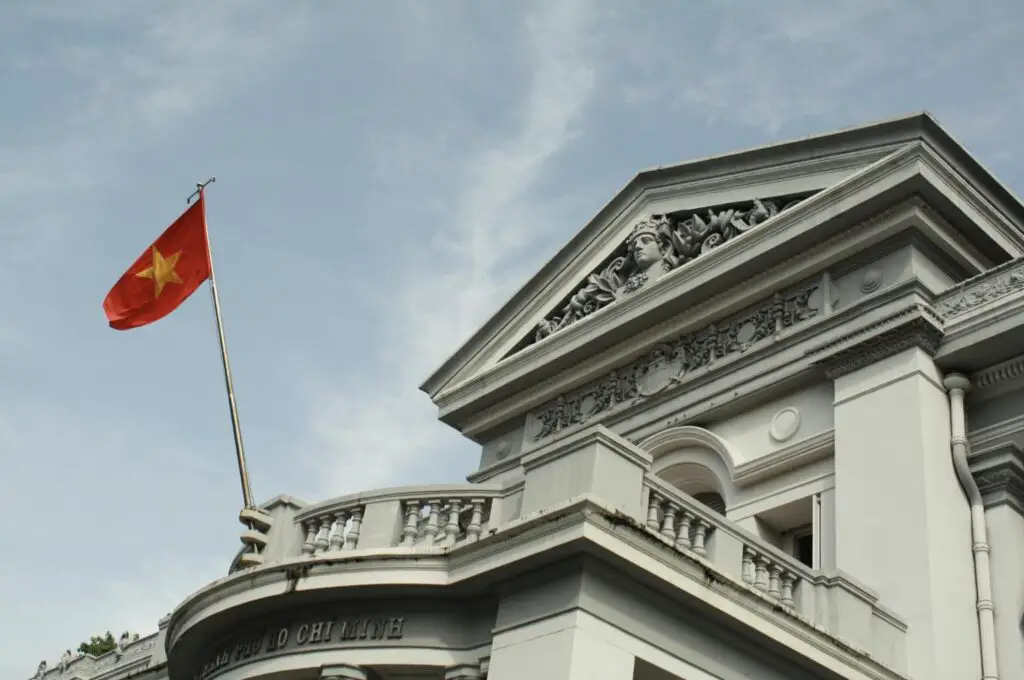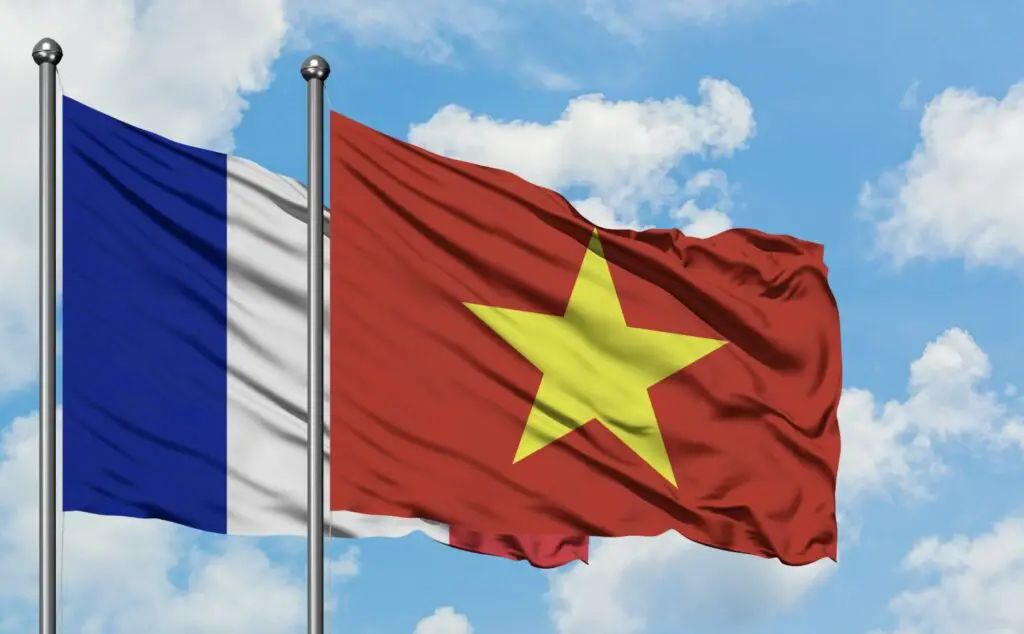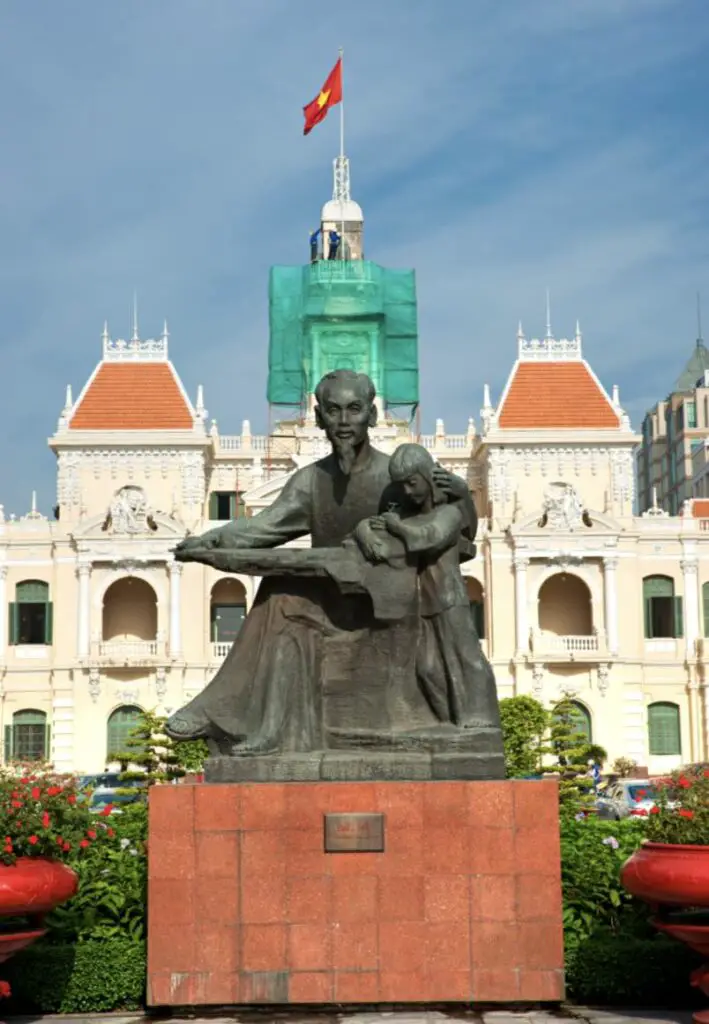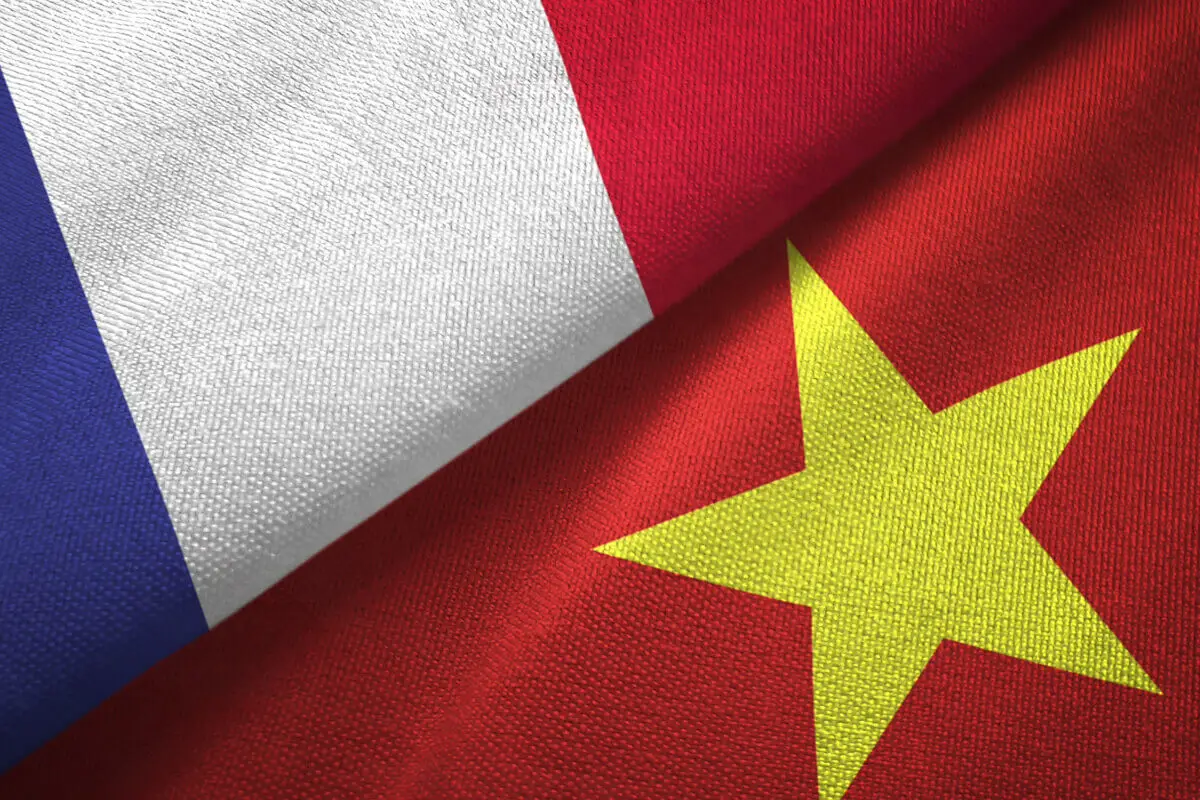The article explores the profound impact of French colonial rule on Vietnam, from reshaping its political landscape to the cultural synthesis that endures today. It examines the complex legacy of French occupation, the indomitable spirit of Vietnam in its fight for independence, and the ongoing influences that continue to shape the nation.
This blog analyzes economic, social, political, and cultural dimensions to seek a comprehensive understanding of Vietnam’s past and its lasting imprints on the country’s present and future.
Table of Contents
- Historical Context of French Indochina
- The First Indochina War: Road to Dien Bien Phu
- Geneva Accords and the Partition of Vietnam
- French Legacy and Influence in Modern Vietnam
- Related Questions
Historical Context of French Indochina
French colonial rule, lasting from the mid-19th century until 1954, significantly molded modern Vietnam’s political, social, and cultural landscape. When France first invaded Vietnam, it pursued a mission to dominate and exploit, intertwining Vietnam’s destiny with European colonial interests. This period left indelible marks on the nation, influencing its path toward independence and shaping its current societal norms and government structures.
The introduction of French governance transformed Vietnam’s political landscape. Traditional systems were upended as the colonial administration centralized power, undermining local authority and integrating Vietnam into the broader framework of French Indochina. This centralization facilitated control and exploitation and laid the groundwork for modern governance structures. It exposed Vietnamese leaders to Western political ideologies, eventually fueling nationalist and independence movements that would challenge colonial rule.
Economically, French colonialism reoriented Vietnam’s economy towards serving French interests. Massive infrastructure projects—railways, roads, and ports—were undertaken to extract resources more efficiently. While these projects modernized Vietnam’s economic landscape, they benefited French businesses and exacerbated social inequalities. The focus on raw material exports and the introduction of new land ownership laws disenfranchised many Vietnamese, leading to widespread poverty and discontent.
The French influence was profound socially and culturally. The French language and cultural practices were promoted among the Vietnamese elite, creating a Westernized class that often found itself torn between traditional Vietnamese values and French colonial culture. Education reforms introduced a Western curriculum, which, while improving literacy and creating a more educated populace, also sowed the seeds of dissent as educated Vietnamese began to question colonial rule.
The harsh reality of exploitation and cultural suppression under French rule brewed resentment and resistance among the Vietnamese population. The struggle against colonial dominion fostered a strong sense of nationalism and unity, setting the stage for the eventual fight for independence led by figures like Ho Chi Minh. The resistance efforts not only aimed at expelling the French but also at reclaiming Vietnamese identity and sovereignty.
The legacies of French colonial rule in Vietnam are complex. On the one hand, it contributed to infrastructural development and a blending of cultural influences that remain visible in modern Vietnamese society. On the other hand, it left scars of exploitation, resistance, and loss that profoundly influenced Vietnam’s national consciousness and its path to becoming a sovereign nation.
As Vietnam continues to navigate its post-colonial identity, the influences of French colonialism remind it of resilience in the face of adversity and the ongoing journey towards healing and growth. The country’s efforts to foster a unique identity that honors its past while looking forward to its future underscore the enduring impact of this pivotal chapter in its history.

The First Indochina War: Road to Dien Bien Phu
Amid the entwined narratives of resistance and the quest for sovereignty, the Battle of Dien Bien Phu is a pivotal chapter in Vietnam’s protracted struggle against French colonial dominion. Situated in the remote northwest of Vietnam, Dien Bien Phu was chosen by French military strategists as the site for a decisive confrontation designed to cripple the Viet Minh’s burgeoning insurgent movement.
The French, underestimating the resolve and ingenuity of their adversaries, envisioned Dien Bien Phu as a fortified stronghold that would lure the Viet Minh into a conventional battle, where advanced weaponry and superior tactics would ensure a French victory. This underestimation began a saga that would culminate in a dramatic reversal of fortunes.
The logistical audacity of the Viet Minh, spearheaded by General Vo Nguyen Giap, turned the French strategic calculus on its head. In an extraordinary feat of human endeavor and military strategy, the Viet Minh transported heavy artillery pieces through treacherous terrain, piece by piece, often by bicycle or borne on the shoulders of determined soldiers. These artillery units, painstakingly positioned on the surrounding highlands, would become the harbingers of doom for the French garrison below, marking a masterstroke in military tactics that the French command had deemed impossible.
The siege of Dien Bien Phu was characterized by relentless artillery barrages that decimated the morale and fortifications of the French forces. The Viet Minh’s encirclement tactics effectively cut off all avenues for resupply and reinforcement, turning Dien Bien Phu into a deadly trap from which there was little hope of escape. The French airpower, upon which so much reliance had been placed, proved inadequate against the well-concealed and fortified positions of the Viet Minh. Aerial resupply missions became increasingly difficult, often resulting in losing precious supplies and equipment to enemy forces.
Moreover, the battle exposed critical flaws in the French military hierarchy and planning. Assumptions of technological and tactical superiority blinded the French command to the realities of guerrilla warfare, where adaptability, tenacity, and an intimate knowledge of the terrain conferred significant advantages to the Viet Minh. Though well-trained and equipped, the French forces were mired in a war of attrition for which they were ill-prepared.
As weeks turned into months, the plight of the French forces grew increasingly dire. The Viet Minh, aware of the psychological toll the siege was taking, intensified their efforts, demonstrating a remarkable capacity to mobilize resources and manpower despite significant hardships. The eventual fall of Dien Bien Phu, after a grueling fifty-five-day siege, was not merely a tactical defeat for France but a symbolic loss that reverberated across the colonial empire. It signified the end of an era and catalyzed the process of decolonization across Asia and Africa.
Analyzing the defeat at Dien Bien Phu, it becomes evident that it was not solely the result of military miscalculation but a manifestation of the broader dynamics of colonial resistance.
The Vietnamese victory at Dien Bien Phu was forged in the crucible of a genuine desire for self-determination, a trait simmering beneath the surface of colonial rule for decades. The battle underscored the limits of conventional military power in the face of determined resistance fueled by a cause as profound as national liberation. Furthermore, it highlighted the changing nature of global power dynamics in the post-World War II era, signaling a shift towards recognizing self-determination and sovereignty as fundamental rights of all peoples.
In the aftermath of Dien Bien Phu, the Geneva Accords laid the groundwork for the eventual withdrawal of French forces from Vietnam, marking the end of nearly a century of colonial rule. Dien Bien Phu’s legacy remains emblematic of the indomitable spirit of a people united in the pursuit of independence. It serves as a testament to the power of resilience and strategic ingenuity in altering the course of history.

Geneva Accords and the Partition of Vietnam
Following the seismic events of Dien Bien Phu and the robust push for sovereignty, the Geneva Accords emerged as a pivotal moment that marked the end of French dominion in Vietnam and substantially shaped its future trajectory. The Accords, culminating in multifaceted discussions, delineated a new dawn for Vietnam, setting forth a framework that would significantly influence the nation’s path forward.
At the heart of the Geneva Accords was the provision for the temporary division of Vietnam. The nation was bisected along the 17th parallel, crafting two distinct zones: North Vietnam and South Vietnam. This division was intended as a provisional measure, with the promise of national elections to reunify the country under a singular governance framework. However, the journey from division to anticipated reunification unraveled in ways that deeply impacted Vietnam’s socio-political and military landscape.
Under Ho Chi Minh’s leadership, North Vietnam embraced a socialist doctrine, aligning closely with the Soviet Union and China. This alignment reflected the global Cold War dynamics, pitching the communist bloc against the capitalist West.
South Vietnam, meanwhile, positioned itself under the influence of Western powers, particularly the United States. This dichotomy laid the groundwork for escalating tensions and ideological contestations that far exceeded Vietnam’s borders, drawing international attention and involvement.
The provisional division fostered by the Geneva Accords also set the stage for internal discord within Vietnam. The dichotomy between the North and the South created fertile ground for political and military tensions. The anticipated national elections, designed to bridge the divide, never materialized. The divergent paths of the two regions, fueled by external influences and internal disagreements, eventually led to the Vietnam War. This conflict was a battle over territorial integrity and political ideology and a manifestation of the global struggle between the communist and capitalist blocs during the Cold War era.
Furthermore, the Accords affected the civilian population, leading to significant migrations. Fearing persecution and seeking alignment with their ideological beliefs, approximately one million people moved from North to South Vietnam. This mass movement, encouraged by the United States, altered the region’s demographic and social fabric, embedding a sense of division beyond geography.
The Geneva Accords, while initially heralded as a step towards peace and self-determination for Vietnam, inadvertently laid the foundations for one of the most protracted and divisive conflicts of the 20th century. The Vietnam War, ensuing from the unresolved tensions and divisions stipulated by the Accords, deeply scarred the nation, resulting in monumental loss of life, widespread destruction, and enduring legacies of trauma.
In the grand tapestry of Vietnam’s history, the Geneva Accords stand out as a moment of transformation and transition. They encapsulated the competing pressures of colonial legacies, Cold War dynamics, and the unyielding quest for national sovereignty.
The path charted by the Accords illuminated the complexities of navigating post-colonial independence amidst global ideological battles, leaving an indelible mark on Vietnam’s journey through the latter half of the 20th century. In reflection, the Geneva Accords delineated a nation’s borders, struggles, aspirations, and ongoing quest for unity and identity amidst the whirlwinds of international politics and internal strife.

French Legacy and Influence in Modern Vietnam
In the tapestry of Vietnam’s vibrant history, the French influence weaves through the country’s fabric even today, years after the colonial era came to a close. From the architectural splendor to linguistic nuances, the echoes of French presence persist, blending seamlessly with Vietnam’s indigenous traditions and customs.
Walking through the bustling streets of Hanoi or Ho Chi Minh City, one notices that the architectural heritage is a silent testament to the French aesthetic. The majestic Notre Dame Cathedral in Ho Chi Minh City, with its twin bell towers and rose-colored bricks, could easily be mistaken for a misplaced monument from the heart of Paris.
Similarly, the Hanoi Opera House, inspired by the Palais Garnier in France, showcases the opulence and grandeur of French colonial architecture. These landmarks are not mere relics of the past but continue to play a pivotal role in Vietnam’s cultural and social life, hosting events and gatherings that weave the nation’s contemporary narrative.
The culinary landscape of Vietnam also reflects a fascinating fusion of French and Vietnamese flavors, a testament to the intermingling of cultures that occurred during the colonial period. The quintessential Vietnamese sandwich, banh mi, perfectly symbolizes this culinary hybridity.
Featuring a French baguette stuffed with an assortment of Vietnamese fillings such as cilantro, pickled carrots, daikon, and various meats, banh mi represents the blending of two worlds on a single plate. The widespread popularity of coffee in Vietnam prepared using the French drip process but with a distinctive local twist by adding sweetened condensed milk further underscores the enduring French influence on Vietnamese cuisine.
Language and education in Vietnam also bear marks of the French colonial legacy. Although not as prevalent as Vietnamese, the French language still holds its ground, especially among the older generations and the educated elite.
This linguistic connection is strengthened by the presence of Francophone institutions and French bilingual schools that continue to operate, fostering a bridge between Vietnamese and French cultures. Moreover, Vietnam’s legal and educational systems, modeled after the French systems during the colonial era, have evolved but still retain foundational elements inspired by French thought and philosophy.
The influence extends into the realm of fashion, where the elegance and style of French fashion have intertwined with Vietnam’s distinct textile heritage. The ao dai, Vietnam’s traditional dress, transformed the colonial era, becoming more form-fitting and incorporating elements reminiscent of French fashion. Today, Vietnamese fashion designers often draw on this blend of influences, creating garments that reflect a unique fusion of French sophistication and Vietnamese tradition.
The French imprint on Vietnam is a memorable part of the latter’s identity. Far from being a relic of colonial domination, this influence has morphed into a rich, complex layer of Vietnam’s cultural and social fabric.
The seamless integration of French elements with Vietnamese traditions speaks to a nation’s resilience and ability to absorb, adapt, and evolve, creating a unique cultural tapestry that captivates and enchants. Through architecture, cuisine, language, education, and fashion, the legacy of French influence endures, a testament to a shared history that continues to shape and enrich the Vietnamese way of life.
Through the lens of history, the legacies of French colonial rule in Vietnam offer invaluable insights into the country’s transformation and the resilient spirit of its people. From the architectural marvels and culinary fusions to the struggles for sovereignty and identity, Vietnam’s fabric is intricately woven with threads of its colonial past, resistance efforts, and the quest for autonomy.
This narrative sheds light on the complexities of colonial legacy and highlights the distinctive path that Vietnam has carved out in the aftermath of foreign domination. It embraces its heritage while forging ahead into a future of its own making.
At A Bus On A Dusty Road, we talk about travel, life, and ex-pat living. We are all about “Living Life As A Global Citizen.” We explore social, cultural, and economic issues and travel.
We would love to have you be part of our community. Sign up for our newsletter to keep up-to-date by clicking here. If you have any questions, you can contact me, Anita, by clicking here.
Listen to our Podcast called Dusty Roads. You can find it on all major podcast platforms. Try out listening to one of our podcasts by clicking here.
Subscribe to our A Bus On A Dusty Road YouTube Channel with great videos and information by clicking here.
Related Questions
Which Airport Is Close To Yellowstone? And Other Yellowstone Airport Travel Facts
West Yellowstone Airport is the closest airport to Yellowstone National Park. The airport is only a few miles from the park entrance but has a limited flight schedule and is not open all year round. Other airports include Jackson Hole Airport and Bozeman Yellowstone International Airport; both offer more flights, car rental, and ground transportation options.
By clicking here, you can discover Which Airport Is Close To Yellowstone? And Other Yellowstone Airport Travel Facts.
Is Yogi Bears Jellystone Park Based On Yellowstone Park?
Yogi bear’s Jellystone is known to be based in Yellowstone National Park, even though it is supposed to represent all U.S. National Parks. Yogi Bear is a fictional cartoon character that has been around since 1958 but has recently seen some reemergence with a new Yogi Bear Movie (2010) and Jellystone Cartoon series (2021).
By clicking here, you can discover Is Yogi Bears Jellystone Park Based On Yellowstone Park?
What Happened To The Black Wolf At Yellowstone?
The Black wolves at Yellowstone are still part of Yellowstone National Park. In Yellowstone, 505 of the wolves are black; the black color is not native to most wolf populations.
By clicking here, you can discover What Happened To The Black Wolf At Yellowstone?

